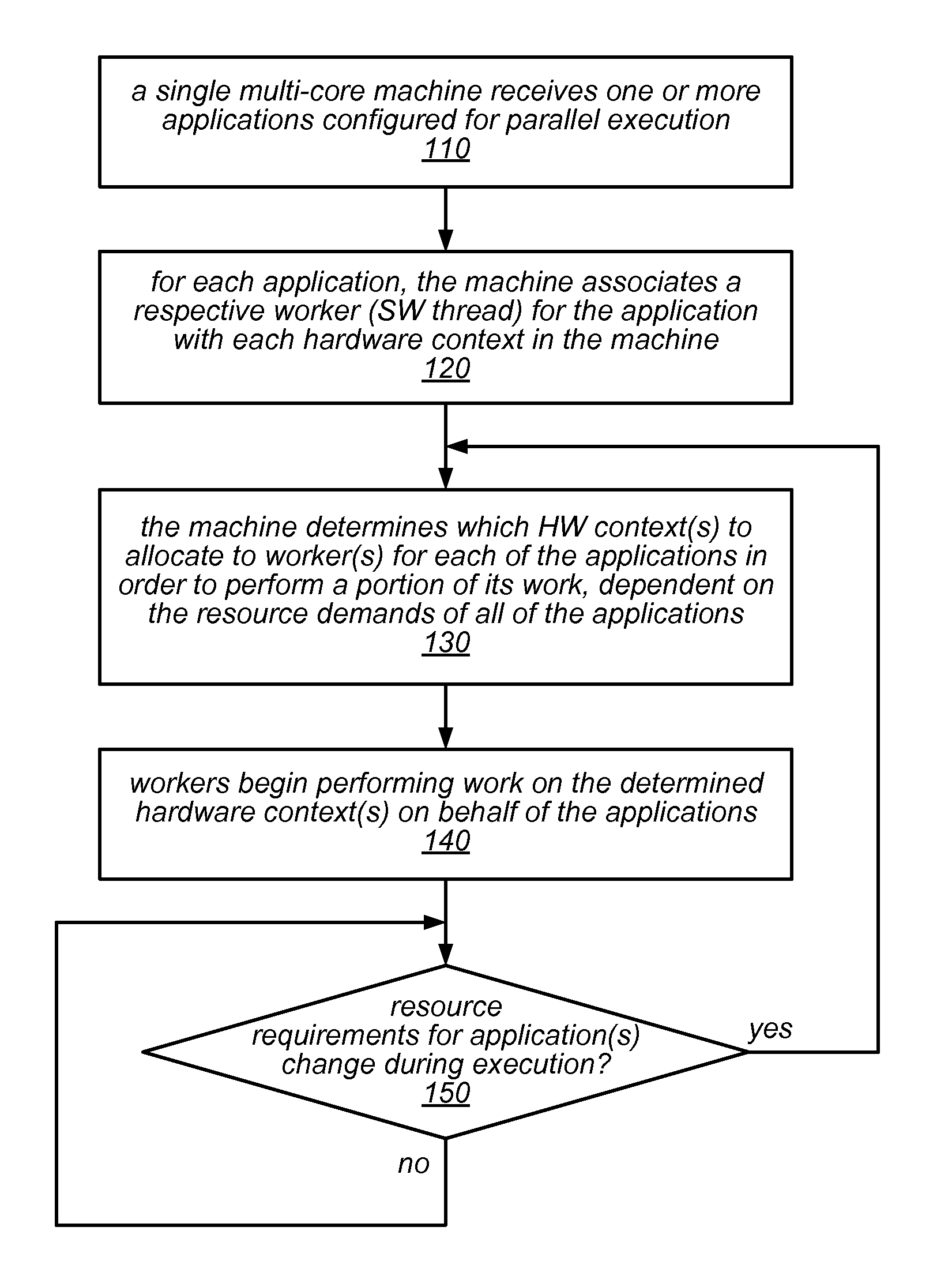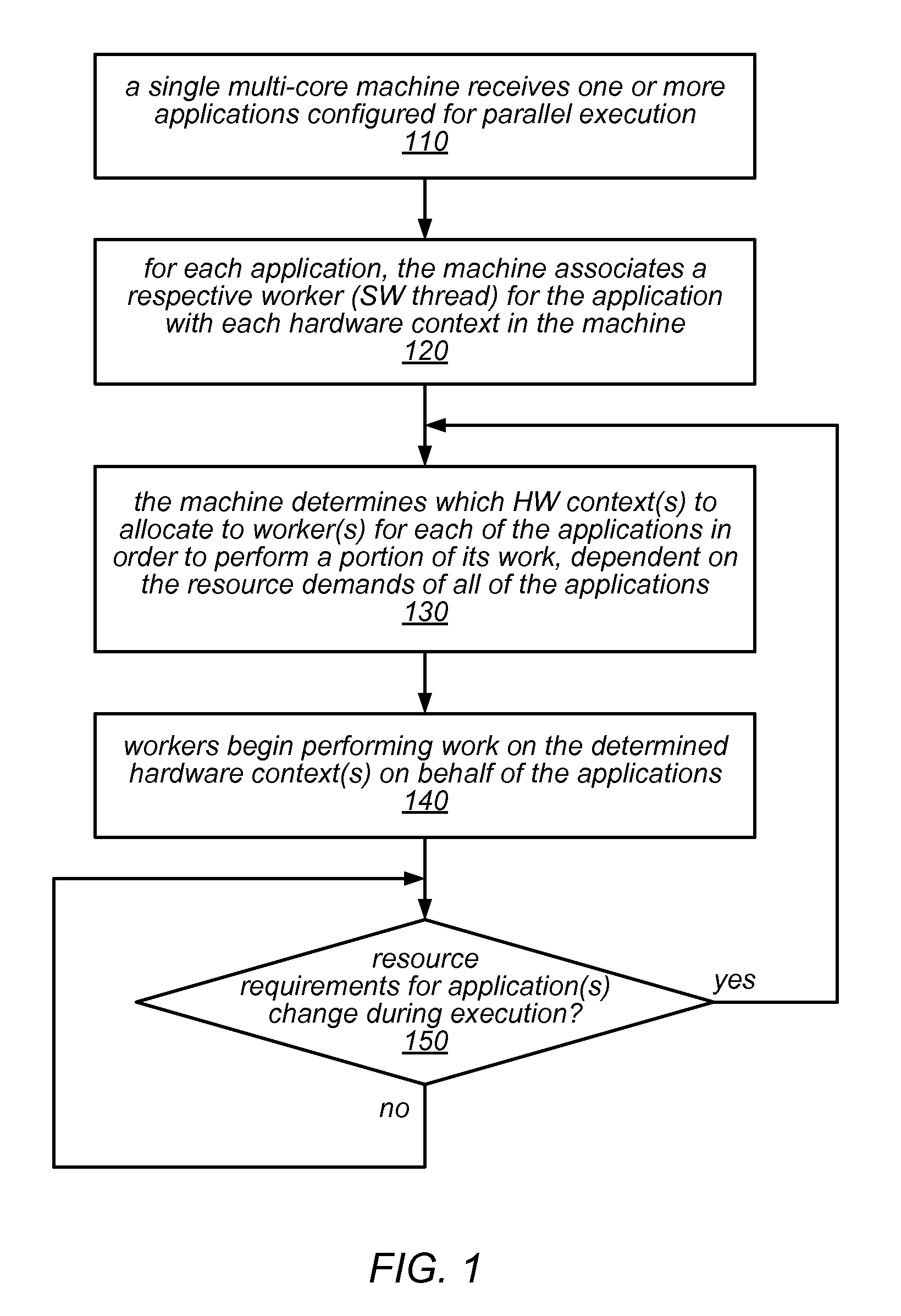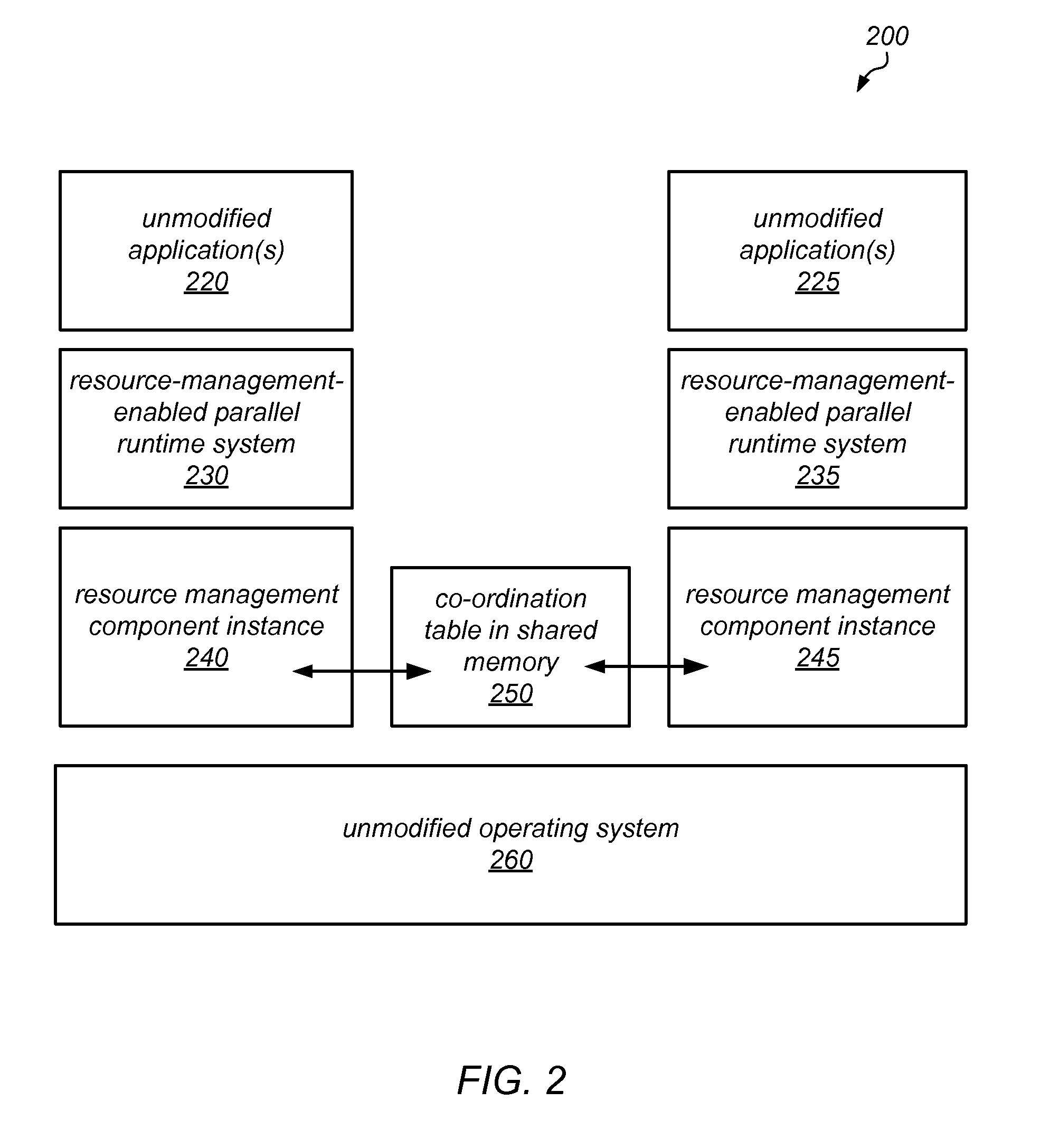Dynamic co-scheduling of hardware contexts for parallel runtime systems on shared machines
a runtime system and hardware context technology, applied in the field of parallel computing, can solve the problems that current operating systems and runtime systems do not perform well for these types of workloads, and achieve the effect of reducing load imbalances
- Summary
- Abstract
- Description
- Claims
- Application Information
AI Technical Summary
Benefits of technology
Problems solved by technology
Method used
Image
Examples
Embodiment Construction
[0023]As noted above, software is increasingly written to run on multi-processor machines. In addition, many parallel workloads, such as those used in graph analytics, are increasingly variable in their CPU requirements. Trends in this area include the need to make effective use of multi-core hardware (leading to increasing use of parallelism within software), the desire to use hardware efficiently (leading to greater co-location of workloads on the same machine), and the expectation that parallel applications should “just work” without needing to perform careful tuning that is directed to any specific hardware. These trends make it important for systems to be able to handle running multiple parallel workloads on the same machine (and for the workloads to behave and perform well when doing so) without programmers needing to tune their applications specifically for a given machine or for the workload or combination of workloads that is running.
[0024]Current operating systems and runt...
PUM
 Login to View More
Login to View More Abstract
Description
Claims
Application Information
 Login to View More
Login to View More - R&D
- Intellectual Property
- Life Sciences
- Materials
- Tech Scout
- Unparalleled Data Quality
- Higher Quality Content
- 60% Fewer Hallucinations
Browse by: Latest US Patents, China's latest patents, Technical Efficacy Thesaurus, Application Domain, Technology Topic, Popular Technical Reports.
© 2025 PatSnap. All rights reserved.Legal|Privacy policy|Modern Slavery Act Transparency Statement|Sitemap|About US| Contact US: help@patsnap.com



